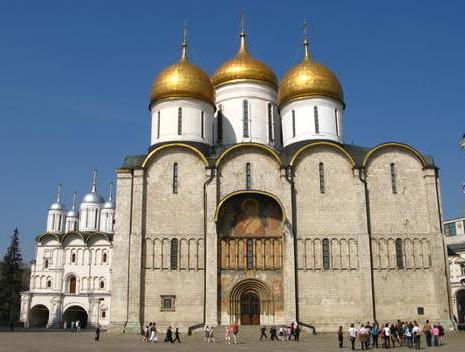The history of the Moscow Kremlin dates back to the mid-eleventh century, when the first fortifications remotely resembling fortifications were built on Borovitsky Hill. The first annalistic mention of these structures dates back to 1147. And in 1238, the Tatar-Mongol invasion razed fragile structures to the ground. Later, since 1264, the Moscow princes were located on the site of the Moscow Kremlin. To protect the princely residences, the Kremlin was rebuilt again. The towers of the Moscow Kremlin were built of selected oak, but the wooden buildings were short-lived, often burned and destroyed by floods.

Beginning in 1367, by order of Prince Dmitry Donskoy, the Kremlin was rebuilt in a white shell rock. In the annals of that time, Moscow is called "white stone". However, the stone turned out to be fragile material, could not withstand flooding, the foundations "floated" and collapsed. In the end, in the middle of the 15th century, a group of Italian architects, led by Antonio Solari, set about building the new Moscow Kremlin as a military-engineering structure, an unprecedented in its strength fortress, an impregnable citadel. The material was selected red burnt brick, and the towers of the Moscow Kremlin from white began to turn into red-brown.
Construction continued until 1495. Twenty towers were built - four passageways and sixteen fortifications. The towers were connected by twenty battlements with loopholes. Along the entire length of the wall there was a “combat move” along which soldiers could freely move from tower to tower. Today's Moscow Kremlin is no different from the one built six hundred years ago. The same towers and the same walls. Only he no longer serves as a fortress to repel enemy attacks, but is a grandiose monument of artistic and historical value.
The Moscow Kremlin is built in the shape of an irregular triangle, one of the sides of which, the eastern one, faces Red Square. All towers of the Moscow Kremlin are combined into one. The main tower - Spasskaya - is adjacent to the Intercession Cathedral. At the opposite end of Red Square, opposite the historical museum, is Nikolskaya Passage Tower. Along the Alexander Garden stretches the northwest side of the Kremlin. And the angular Vodovzvodnaya Tower gives rise to the Moskvoretsky southern line, with the end at the Beklemishevskaya round tower. In the middle of the Alexander line is the second largest Trinity tower, which is connected to the Kutafya tower by a separate branch from the general outline of the Kremlin. Some towers of the Moscow Kremlin had secret underground passages.

In the inner territory are the cathedrals of the Moscow Kremlin, located on Cathedral Square. There are only three of them. The Assumption Cathedral, in which the Russian tsars once crowned, and also held ordinances of the higher Russian clergy. The last in the Assumption Cathedral was crowned Tsar Nicholas II, this was in 1886. The cathedral was built in 1479 by the architect
Fioravanti Aristotle. Assumption Cathedral was robbed and tried to destroy Napolen's soldiers in 1812. A century later, the cathedral suffered during the revolutionary uprising of 1917.
Also on the cathedral square of the Moscow Kremlin is the Annunciation Cathedral, built in 1489 by Pskov architects. The cathedral was conceived as a princely church and for a long time was a temple for Moscow princes. It is famous for its old ship iconostasis, whose icons were painted by Andrei Rublev and Theophanes the Greek. The Annunciation Cathedral was also significantly damaged during the shelling of the Kremlin by artillery in 1917.
The Cathedral Archangel Cathedral, built in 1509 on the site of the former Archangel Cathedral built in 1333, attracts attention on the Cathedral Square in the same place. In the past, the cathedral was the tomb of the Moscow rulers, with it there is a necropolis. There are fifty-four burial places in the cathedral.
Tsar Alexei Mikhailovich and Ivan Kalita, Ivan the Terrible and Mikhail Fedorovich. In 1929, the remains of princesses and queens from the Ascension Monastery were transferred to the cathedral. All the cathedrals of the Kremlin are currently operating and even carry a museum and exhibition load when visiting by their delegations.
The Moscow Kremlin houses the Armory - a large and very significant museum with an extensive collection of rare exhibits of the 17-20 centuries. Numerous exhibition halls introduce visitors to the life and personal life of Russian tsars. Carriages for ceremonial trips and simple carriages, horse harness with silver notches, horse harness, imperial tableware, silverware, dinner sets, thousands and thousands of items of that time. The Armory also houses a collection of works by the famous court jeweler
Carl Faberge. Faberge Easter
eggs are presented as a separate exposition
.